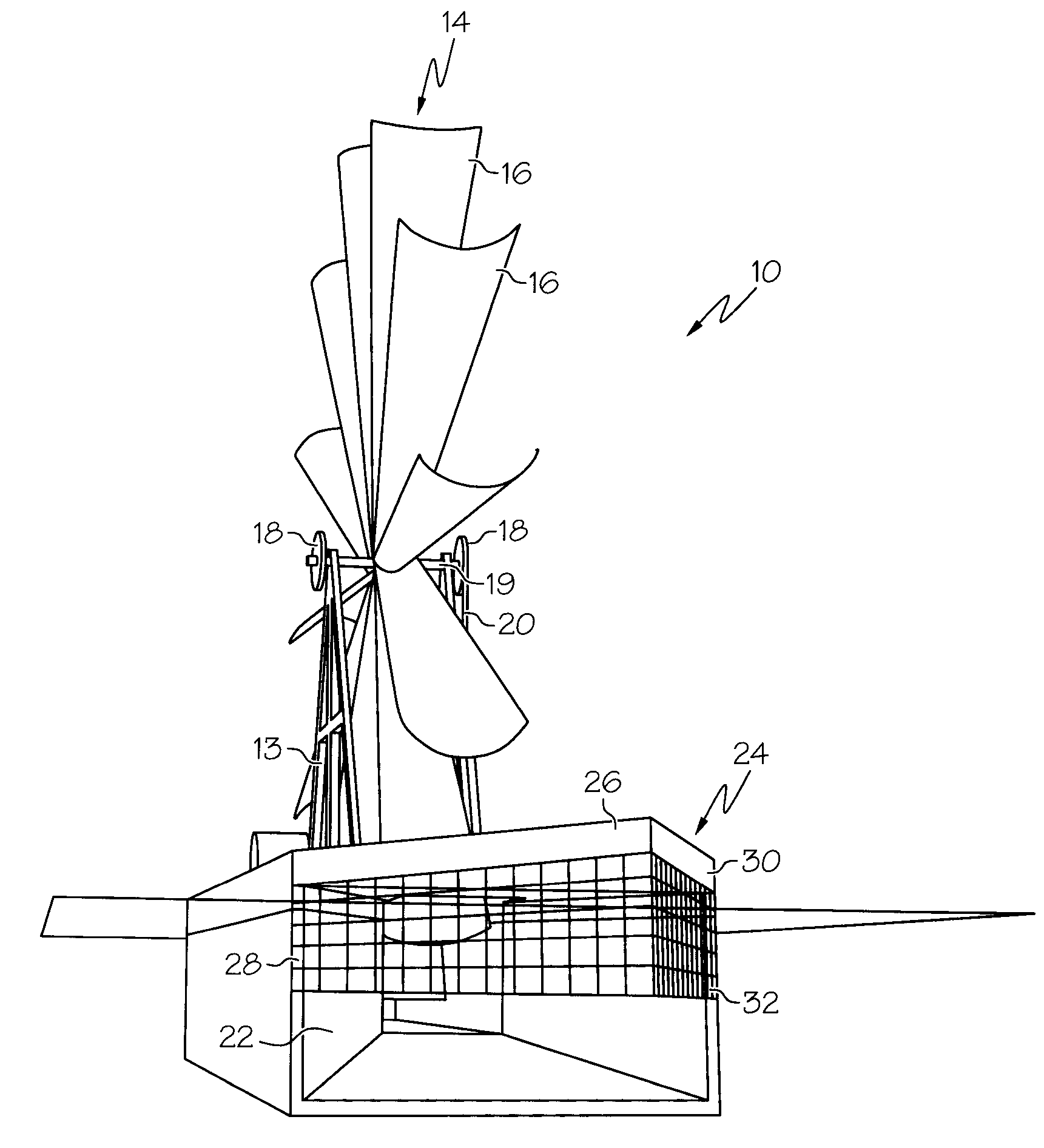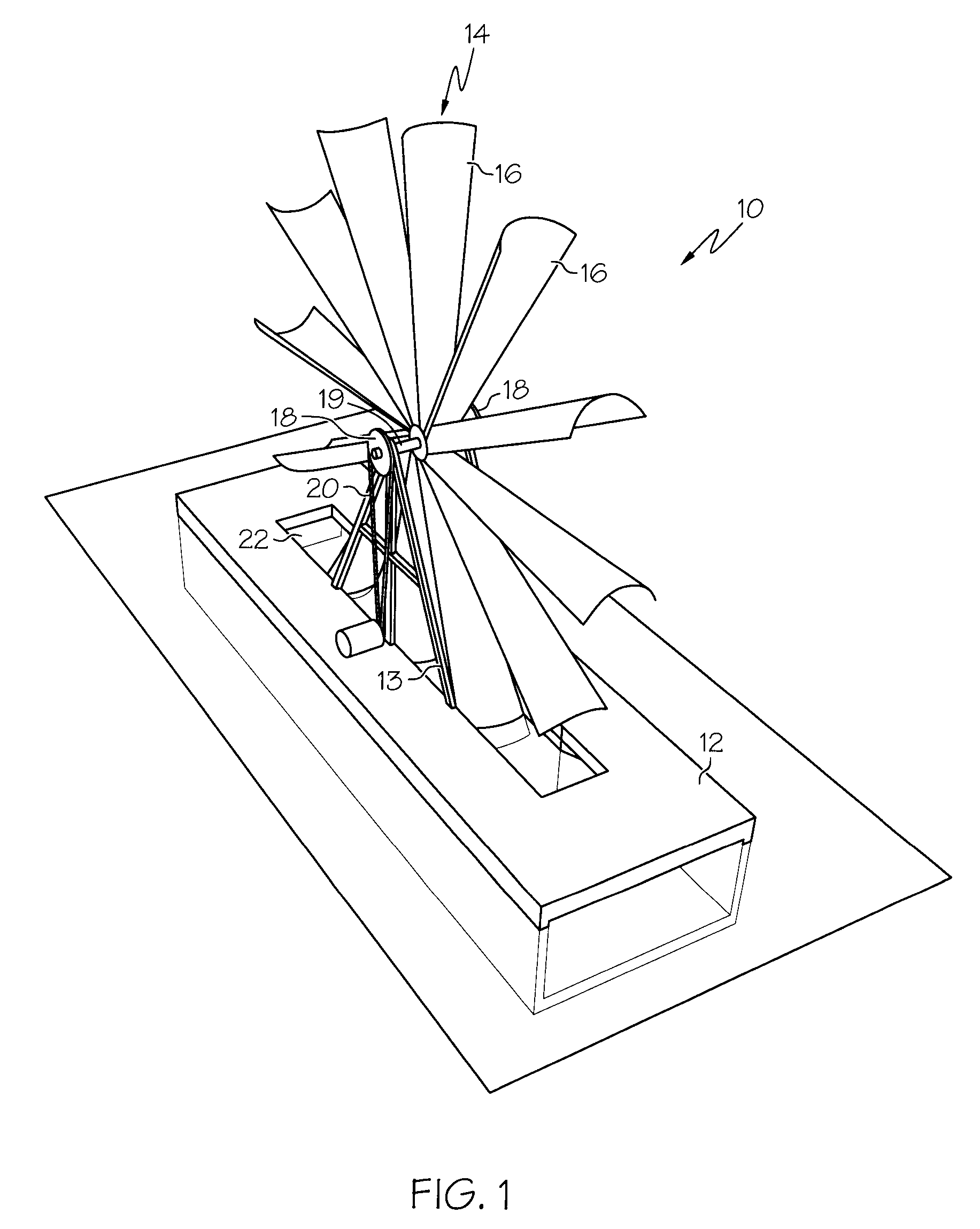Hydroelectric device
a technology of hydroelectric devices and hydroelectric generators, which is applied in the direction of electric generator control, machines/engines, mechanical equipment, etc., can solve the problems of large hydroelectric facilities that may also have undesirable environmental impacts, system failures,
- Summary
- Abstract
- Description
- Claims
- Application Information
AI Technical Summary
Benefits of technology
Problems solved by technology
Method used
Image
Examples
Embodiment Construction
[0023]Turning now to the drawings, wherein like numerals indicate like parts, the numeral 10 indicates generally a hydroelectric device constructed in accordance with the teachings of the present invention. The present hydroelectric device preferably includes a base portion 12, a wheel 14, the wheel having a plurality of blades 16 disposed along a circumference thereof, a pulley 18 associated with said wheel, a belt 20 associated with said pulley, and a nozzle portion 22 associated with or formed within base portion 12. While these features are included in preferred embodiments of the present invention, it is contemplated that additions or modifications to these features may be provided as described below.
[0024]FIG. 1 is a side perspective view of one embodiment of the device of the present invention. As is shown, base portion 12 of device 10 is positioned in a river or other waterway during operative use of the device. Base portion 12 is positioned such that substantially all of ba...
PUM
 Login to View More
Login to View More Abstract
Description
Claims
Application Information
 Login to View More
Login to View More - R&D
- Intellectual Property
- Life Sciences
- Materials
- Tech Scout
- Unparalleled Data Quality
- Higher Quality Content
- 60% Fewer Hallucinations
Browse by: Latest US Patents, China's latest patents, Technical Efficacy Thesaurus, Application Domain, Technology Topic, Popular Technical Reports.
© 2025 PatSnap. All rights reserved.Legal|Privacy policy|Modern Slavery Act Transparency Statement|Sitemap|About US| Contact US: help@patsnap.com



